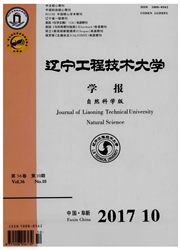

 中文摘要:
中文摘要:
通过室内模拟试验,采用振荡淋洗的方法研究了皂素溶液浓度、pH值、淋洗时间对重金属去除效果的影响。并通过一个一级反应动力学模型对试验数据进行了拟台,得到了两个重要的参数Ce(反应达到、F衡时重金属在液相中的浓度)和K(质量转移系数)。结果表明:皂素溶液在质量浓度为3%、pH值为5.0-55淋洗时间12h的条件下能达到对污染土壤重金属的最大去除率。去除率分别为Cd93.5%,Pb20.5%,Cu8.64%,Zn48.4%。模型拟合的结果表明:镉的质量转移系数最大,其次是锌,然后是铅,最后是铜。这一结果同时也说明了在土壤淋洗过程中,镉和锌最先达到质量转移的平衡状态,然后是铅和铜。
 英文摘要:
英文摘要:
This study reports the feasibility of remediation of a heavy metal (HM) contaminated soil using saponin, an environmentally-friendly extractant. Batch experiments were performed to test the influence of saponin pH, concentration, and contact time on remediation of HM contaminated soil. An empirical model was employed to describe the kinetics of HM dissolution/desorption. Using the model, we can also obtain two important parameters: the equilibrium HMs concentrations (Ce) and mass transfer coefficients (k). Results show that utilization of saponin was effective for removal of HMs from the contaminated soil, attaining 93.5%of Cd, 20.5% of Pb, 8.6% of Cu, 48.4% of Zn in the pH range of 5.0-5.5 within 12 h. The order of mass transfer coefficient was Cd〉Zn〉Pb〉Cu. Such a remediation procedure indicates that saponin is a promising agent for remediation of HM contaminated soils. However, further research is required before the method can be used for in situ remediation of contaminated sites.
 同期刊论文项目
同期刊论文项目
 同项目期刊论文
同项目期刊论文
 期刊信息
期刊信息
